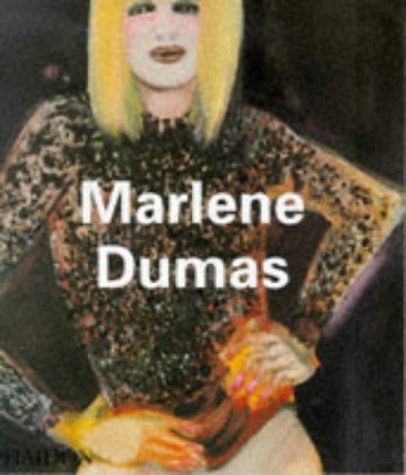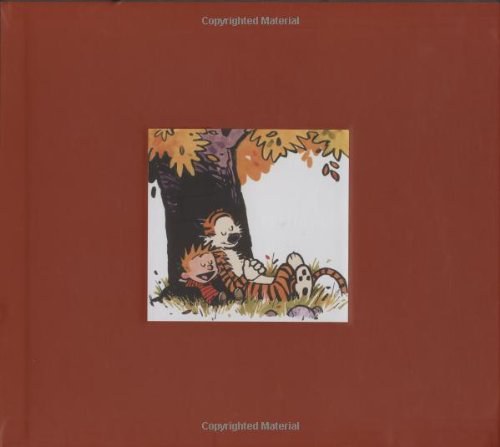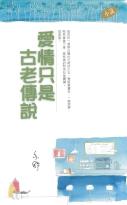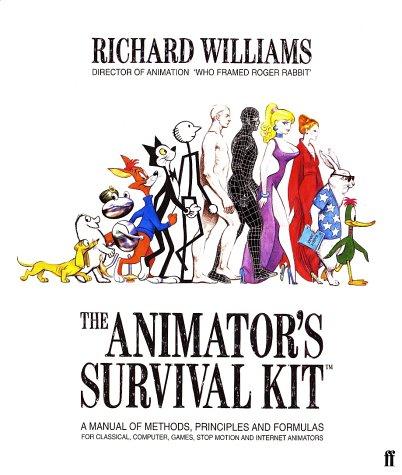
slide:ology
书刊介绍
内容简介
Praise for slide:ology
Copyright
Dedication
Acknowledgments
Foreword
Introduction
Chapter 1. Creating a New Slide Ideology
建立全新的幻灯理念
Section 1.1. Don't Commit Career Suislide
不要委托职业的幻灯制作者
Section 1.2. A Case for Presentations
一个演示案例
Section 1.3. So Where Do You Begin?
从哪里开始?
Section 1.4. Case Study: Mark Templeton
案例研究:
Section 1.5. The Presentation Ecosystem
演示系统
Section 1.6. World Class Presentations Require Time and Focus
世界级的演示要求时间和焦点
Section 1.7. Responding to Audience Needs
响应听众需求
Section 1.8. How Do You Define Your Audience?
如何定义你的听众
Section 1.9. Case Study: Rick Justice Creating Great Presence
案例研究:
Section 1.10. Case Study: ZS Associates An Incentive to Communicate Clearly
案例研究:ZS
Chapter 2. Creating Ideas, Not Slides
建立理念,而不是幻灯
Section 2.1. Finding Your Inspiration
找到灵感
Section 2.2. Innovating with Sticky Notes
使用即时贴创新
Section 2.3. Case Study: Bill McDonough
案例研究:
Section 2.4. Sketching Your Way to Success
画出成功之路
Section 2.5. Collaborating to Get Clarity
??清晰
Section 2.6. Case Study: Mitchell Baker
案例研究:
Section 2.7. Sketching Ideas Using Diagrams
使用图解描绘概念
Section 2.8. Sketching Complete Ideas
描绘完整的概念
Chapter 3. Creating Diagrams
创建图解
Section 3.1. Classifying Diagrams
图解分类
Section 3.2. Abstract Concepts: Flow
抽象概念:流程
Section 3.3. Abstract Concepts: Structure
抽象概念:结构
Section 3.4. Abstract Concepts: Cluster
抽象概念:聚集
Section 3.5. Abstract Concepts: Radiate
抽象概念:发散
Section 3.6. Realistic Concepts: Pictorial
形象概念:插画
Section 3.7. Realistic Concepts: Display Data
形象概念:显示数据--与图表相关的内容
Section 3.8. Making Diagrams Work Together
综合运用图解
Section 3.9. Strengthening the Diagram's Concept
强化图解概念
Chapter 4. Displaying Data
显示数据--本章讲统计图表
Section 4.1. Following the Five Data Slide Rules
五条数据幻灯原则
Section 4.2. Telling the Truth
说出事实
Section 4.3. Getting to the Point
说出重点
Section 4.4. Picking the Right Tool for the Job
使用正确的工具
Section 4.5. Highlighting What's Important
强调重要的
Section 4.6. Chart Makeovers
图表美化
Section 4.7. Case Study: Healthy Waters
案例研究:
Chapter 5. Thinking Like a Designer
象设计师一样思考
Section 5.1. The Value of Design
设计的价值
Section 5.2. Revealing Yourself Through Design Decisions
??设计决策
Section 5.3. Case Study: Al Gore
案例研究:Al Gore(美国前副总统)
Section 5.4. Designing Effective Slides
设计有效的幻灯
Chapter 6. Arranging Elements
安排元素
Section 6.1. Placement of Elements Creates Meaning
元素的位置有意义
Section 6.2. Contrast: Identifying the Main Point Quickly
对比:快速识别主要点
Section 6.3. Flow: Ordering How the Information Is Processed
流程:排序信息处理流程
Section 6.4. Hierarchy: Seeing Relationships Between Elements
层次:发现元素之间的联系
Section 6.5. Unity: Sensing the Structure of Information
联合:了解信息结构
Section 6.6. Case Study: Adobe Controlling
案例研究:
Section 6.7. Proximity: Perceiving Meaning from Location
就近:感知位置意义
Section 6.8. Whitespace: Getting Visual Breathing Room
留白:留下视觉上的喘息空间
Section 6.9. Case Study: Garr Reynolds
案例研究:Garr Reynolds(演示之禅的作者)
Section 6.10. Finding Beauty in the Design Around You
发现身边的设计之美
Chapter 7. Using Visual Elements: Background, Color, and Text
使用视觉元素:背景,颜色,文本
Section 7.1. The Ingredients of a Great Slide
卓越幻灯的要素
Section 7.2. Background
背景
Section 7.3. Backgrounds Are a Surface for Digital Assets
背景是数字资产的外表
Section 7.4. Traversing Flatland and Dimensions
??平面和维度
Section 7.5. Creating a Sense of Space
建立空间感
Section 7.6. Determining the Light Source
决定光源
Section 7.7. Color
颜色
Section 7.8. About the Color Wheel
色彩轮
Section 7.9. Using the Power of Color
使用颜色的力量
Section 7.10. Choosing Your Colors
选择你自己的颜色
Section 7.11. Using Industry Color Palettes
使用行业颜色板
Section 7.12. Assembling a Color Palette
配置颜色板
Section 7.13. Case Study: BzzAgent
案例研究:
Section 7.14. Text
文本
Section 7.15. Dissecting a Font
解剖字体
Section 7.16. How Many Words Should Be on a Slide?
一张幻灯上多少字
Section 7.17. Typesetting
排版
Section 7.18. Typesetting a Block of Text
排版大量文字
Section 7.19. Obeying Gun Laws and Bullet Laws
遵从??原则
Section 7.20. Validating Your Font Size
验证字体大小
Section 7.21. Playing Text Animations as the Audience Enters
使用文字动画
Chapter 8. Using Visual Elements: Images
使用视觉元素:图片
Section 8.1. Assembling an Image System
配置图片系统
Section 8.2. Photography
摄影
Section 8.3. Case Study: School District
案例研究:
Section 8.4. Taking Your Own Photos
使用自己的照片
Section 8.5. Illustrations
插图
Section 8.6. Creating an Illustration Library
建立插画库
Section 8.7. Illustrating Complex Stories
图解复杂的故事
Section 8.8. Stylizing Diagrams and Illustrations
风格化图示和图解
Section 8.9. Case Study: Dr. Mike Magee
案例研究:
Section 8.10. Case Study: Incorporating Video
案例研究:
Chapter 9. Creating Movement
建立运动
Section 9.1. Designing Time-Based Scenes
设计基于时间的场景
Section 9.2. Planning Animations
计划动画
Section 9.3. Animating Serves a Purpose
动画服务于目标
Section 9.4. Taking Lessons from the Movies
从电影学习
Section 9.5. Making Objects Move and Change
让对象运动和改变
Section 9.6. Creating Panoramas and Scenes
建立全景图
Section 9.7. Creating Scenes, Not Slides
建立场景,而不是幻灯
Section 9.8. Case Study: Guerrino De Luca
案例研究:
Section 9.9. Brainstorming Meaningful Metaphors
头脑风暴有意义的隐喻
Section 9.10. Case Study: Rare
案例研究:
Section 9.11. Avoiding Visual Vertigo
避免视觉眩晕
Chapter 10. Governing with Templates
用模板管理
Section 10.1. Arming Your Workforce
武装你的工作人员
Section 10.2. Making Template Design Decisions
制定模板设计原则
Section 10.3. Case Study: Hewlett-Packard
案例研究:HP
Section 10.4. Experimenting with Various Looks
尝试不同的外观
Section 10.5. Following Template Guidelines
遵守模板指南
Section 10.6. Building Presentations Collaboratively
协同建立演示
Chapter 11. Interacting with Slides
与幻灯交互
Section 11.1. The Power of Constraints
约束的力量
Section 11.2. Constraining the Text
约束文字
Section 11.3. Reducing Text on a Slide
减少文字
Section 11.4. Navigating Through Your Message
导航你的信息
Section 11.5. Constraining the Length
控制长度
Section 11.6. Case Study: Pecha Kucha
案例研究:
Section 11.7. Constraining the Projector
控制投影仪
Section 11.8. All the World's a Stage
世界的舞台
Section 11.9. How Many Slides? Use the 10/20/30 Rule.
多数张幻灯?10/20/30原则
Section 11.10. How Many Slides? The Sky Is the Limit.
多数张幻灯?天高任鸟飞
Section 11.11. How Many Slides? Depends on the Technology.
多数张幻灯?看使用的技术
Section 11.12. To Project or Not to Project
投影还是不投影
Section 11.13. Case Study: John Ortberg
案例研究:
Section 11.14. Small Device, Big Impact
小设备,大印象
Section 11.15. Case Study: Jill Bolte-Taylor
案例研究:
Section 11.16. A Call to Relate
??
Chapter 12. Manifesto: The Five Theses of the Power of a Presentation
纲领:5个观点
Section 12.1. Treat Your Audience as King
以听众为中心
Section 12.2. Spread Ideas and Move People
传播理念、感动人们
Section 12.3. Help Them See What You're Saying
让他们看到你所说的
Section 12.4. Practice Design, Not Decoration
学习设计,而不是装饰
Section 12.5. Cultivate Healthy Relationships
加强有益的联系
References
Index
作者简介
Nancy Duarte,Duarte设计公司领导者。该公司是硅谷最大的设计公司,也是一家女性主导的公司。它的客户大多是财富500强企业,如Adobe,思科,Google和惠普。Duarte设计公司被公认为是演说设计领域的领头羊。
精彩摘录
3secondrule-Askyourselfwhetheryourmessagecanbeprocessedeffectivelywithinthreesecondssotheaudiencecouldreturntothepresenter.Ifaslidecontainsmorethan75words,ithasbecomeadocument.Presentationwith50orsowordsperslideserveasateleprompter.Truepresentationsfocusonthepresenterandthevisionaryideasandconceptstheywanttocommunicate.*Don'tanimateyourtextunlessitaddsvalue,meaning,oremotiontothecontent.*HoldingdowntheShiftkeyandthenpressReturncreateslinespacing.Thisiscalledasoftreturn.ThemainmessagewasthattherearethreeeasywaystoinstallJavelin.Toavoidconfusion,it'sbettertosplitthecontentacrossmorethanoneslide.Mostapplicationshaveapushtransition.Whenapplied,theentireslide...
——引自章节:Thewholebook
Insteadofusingsidesloadedwithbullets,experimentwithavisualapproach.Keepgraphicsextremelysimple.Gunsdon'tkillpeople,asthesayinggoes,butBULLETSkillplenty!*Agoodruleofthumbforfontsizeistodividetheoldestinvestor'sagebytwo,andthenusethatfontsize.-GuyKawasakiUsethefollowingfiveprinciplestopresentyourdataintheclearestpossibleway.1Tellthetruth2Gettothepoint3Picktherighttoolforthejob4Highlightwhat'simportant5KeepitsimpleYoucancreategraphicsineithera2Dor3Dspace.Butonlypickone.Minimizingdepthminimizescomplexity.Keepthelightingsourceconsistent.UsingthePowerofColorMonochromaticAnalogous*Complementary-providethemostcontrast,givingpower,butonlytwocolors*Splitco...
——引自章节:Thewholebook
相关推荐
-

电影的节奏是心跳
▸“电影的节奏应该来自书写的节奏,来自心跳。”▸持摄影机的哲学家、电影语言的革新者▸罗贝尔·布列松 权威访谈全收录▸中文版首次引进!◂凝聚四十年创作精髓,以精简...
-

敦煌大历史
一个人一生总要去一次敦煌,带上这本书,才能心中有底!从敦煌出发,见证中国历史的大场面!敦煌研究院官方授权罕见石窟、壁画高清原图!★90后学者、敦煌石窟“扫地僧”...
-

从丙午到“流亡”
作品目录丙午丁未年纪事一风狂雨骤二颠倒过来三一位骑士和四个妖精四精彩的表演五帘子和炉子六披着狼皮的羊七乌云的金边干校六记
-

谷歌方法
【美】比尔·基尔迪(Bill Kilday)曾任数字地图初创公司Keyhole的市场营销总监,后担任谷歌地理部门的产品营销经理,负责“谷歌地图”和“谷歌地球”的...
-

仲裁法精要与依据指引
仲裁法精要与依据指引 本书特色 从书稿内容可以看出,这套丛书的编著者是从读者需要出发的,是花了大功夫的。尽管在“精要题目”、“专家意见”、“依据指引”等方面还有...
-

抖音这么玩更引流
江中原,资深互联网营销专家,国家高级人力资源师,国家二级心理咨询师,武汉工程大学客座教授,武昌工学院企业导师。长期从事企业互联网营销与新媒体运营管理工作,专注于...
-

元明清词三百首鉴赏辞典
元明清词三百首鉴赏辞典 本书特色 元明清词继宋词后,仍是流派纷呈,有云间词派、柳州词派、阳羡词派和浙西词派等;名家迭出,有元好问、萨都剌、陈子龙、纳兰性...
-

瓶史 瓶花谱 瓶花三说
原点·给青年人的生活美育书生活的精致和品位与时代无关,从古人极致的日常情趣中找寻今人的生活之道1李冬君15000万字长序全彩装帧2中国古典插花艺术 插花理论开山...
-

人偶的复活
【作者介绍】[日]绫辻行人(Ayatsuji Yukito):日本推理文学标志性人物|新本格派掌门和旗手|史上第一个拿到“麻将名人”的推理作家。拿奖拿到手软,创...
-

蕙说慧道-洁蕙与您知性聊法-(含光盘)
蕙说慧道-洁蕙与您知性聊法-(含光盘) 本书特色 洁蕙把自己的法律素养变成了全民课程,娓娓道来,形象生动,启迪四方,令人感佩。 著名作家余秋雨从一个个生动悬疑的...
-

论灵魂的激情
勒内·笛卡尔,法国著名的哲学家、数学家、物理学家。他对现代数学的发展做出了重要的贡献,因将几何坐标体系公式化而被认为是解析几何之父。他是二元论唯心主义者的代表,...
-

矮纸集
汪曾祺,男,汉族,1920年生,江苏高邮人。少年时就读于江阴南菁中学,后毕业于亚南联合大学中国文学系。建国前曾任中学教员,历史博物馆职员。1940年开始发表作品...
-

电焊工
电焊工 内容简介 任务1了解焊接人门知识与焊接图样1.焊接入门知识简介2.焊接接头及焊接坡口图样任务2认识金属材料与热处理工艺1.认识金属材料2.钢的热处理工艺...
-

海潮之聲套書
朋友以上、戀人未滿純愛小說就從這裡開始……小葉日本台、桂綸鎂、蔡智恆、劉黎兒、藤井樹深情推薦(劉黎兒、蔡智恆特別撰文)吉卜力工作室經典青春動畫《海潮之聲》改編自...
-

中国写本大藏经研究
方广锠,哲学博士。上海师范大学法政学院哲学系教授。曾在新疆塔城师范学校、中国社科院·北京大学南亚研究所、中国社科院亚太研究所、北京图书馆善本部、中国社科院宗教研...
-

書.設計
你知道一本精裝書是怎樣誕生的嗎?你心目中最優的書籍設計是哪本書?世界各地厲害到令人咋舌的大師級書籍設計去哪看?據說書籍設計已經發展到超專業的日本到底是怎麼演化成...
-

中止犯基本问题研究
中止犯基本问题研究 内容简介 中止犯理论是刑法理论的一个重要的组成部分,本文在借鉴德日等国相吴理论的基础上,从比较分析中止犯的概念入手。对中止犯的立法理由、中止...
-

古建奇谈
精彩摘录中国古建筑专业化的知识体系建立于20世纪二三十年代,之后经过数代人的潜心研究,取得了更多解密中国古建筑的知识成果,
-

法国
所有Lonely Planet旅行指南系列的形式基本一致。开头的章节是由专家撰写的关于目的地的历史、环境、文化等背景介绍。之后的“出行指南”提供了多方面的出行信...
-

时光深处2
风染白,文笔精妙,笔下文字,皆如开在心尖的花,字字戳心。她曾言,特别喜欢一句话,女为悦己者容,士为知己者死,读者于我便是如此。愿所有真心都能得到回报,亦愿所有爱...





